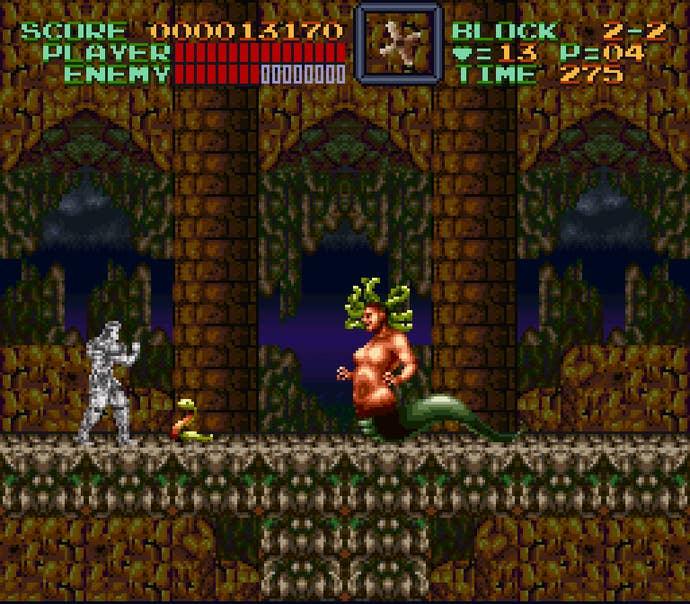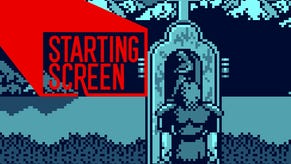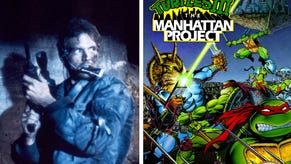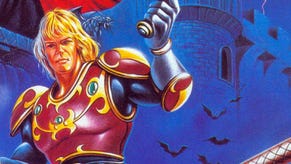Virtual Spotlight: Super Castlevania IV
An entertaining glimpse into what might have been for the Castlevania series.
This article first appeared on USgamer, a partner publication of VG247. Some content, such as this article, has been migrated to VG247 for posterity after USgamer's closure - but it has not been edited or further vetted by the VG247 team.
A lot of Castlevania fans regard Super Castlevania IV as the best 16-bit entry in the series, if not the best Castlevania game, period. While it's a great game, I can't say I entirely agree with their assessment, and revisiting it on Wii U Virtual Console has reminded me why.
I will give Castlevania IV the nod for one superlative, though: It's definitely the most atypical Castlevania game. You can definitely tell which franchise it's a part of, but moment to moment it really doesn't play like any other entry in the series. It kind of feels like the designers looked at the shiny new Super NES hardware, took stock of the series to date, and declared, "Alright, we have to make this the most Castlevania Castlevania ever." And so, in a sense, it's almost like a work of self-parody -- Castlevania exaggerated to the point of preposterousness.
Consider our hero, Simon Belmont. In the original Castlevania on NES, he moved slowly and methodically, but with precision and a certain rhythm. In his sole Super NES outing -- which was essentially a remake of the original NES game -- he moved with agonizing slowness. His gait was stiff, possibly because his upper body appeared to have been fused to some sort of metal rod that kept it from moving at all, and his stride covered only tiny amounts of ground with each step. And if you wanted to make him move even more slowly, you could make him duck and crawl at half-speed.

To compensate, Konami gave Simon greatly improved whip-handling skills. No more of that miserable "whipping only forward" nonsense; Castlevania IV's Simon could whip in eight different directions, a revolution of input design that required a fundamental change to Castlevania's core mechanics. Subweapons were shifted to their own button so that "attack + up" would cause Simon to actually attack upward rather than flinging a dagger or boomerang -- a simple, logical change that couldn't have happened until the advent of controllers with more than two face buttons.
Actually, a lot of Castlevania IV felt like it was designed to show off the new hardware. The fourth stage has become fairly infamous for basically coming off as a glorified tech demo. There was the room with the spinning background (which was entirely for looks), the rotating room of spikes (which put Simon's ability to grapple and swing with his whip to good use), and the boss that shrank as you chipped away at its mass. Neat at the time, but hopelessly gimmicky in hindsight. On the other hand, the soundtrack's composition made full use of the Super NES's distinctive sound chip, embellishing the adventure with a muted, jazz-like score low on bombast and heavy on sampled pianos, woodwinds, and acoustic bass. It's frankly like no other video game soundtrack ever composed, and it's all the more precious for its unique style.
Castlevania IV's stages play out like a compressed version of Castlevania III -- you have to make the trip to Dracula's castle before you can battle through the ancient structure for which the game was named, but you don't have a choice of routes by which to travel. Familiar monsters and tools appear along the way, including bone-chucking skeletons and the stupid weak dagger no one ever wants to use. Simon has a few new tricks to make use of; not only his improved whip skills, but also the ability to jump onto and off of stairs. Revolutionary!

The plodding pace of the game is its greatest weakness. Older Castlevania games moved slowly, but not like Simon does here. This game lacks the rhythm and grace of its predecessors. Clearly, someone at Konami agreed, because no other game in the franchise plays quite like this. (The closest being the other remake of the original Castlevania for the Sharp X68000 home computer.) The next game in the series, Rondo of Blood, took a more adrenaline-soaked approach to the NES style and ended up setting the tone for the core games for more than a decade. If anything, Castlevania IV is noteworthy for establishing a new trend for the series: An anything-goes willingness to throw out preconceptions and put a different spin on Castlevania. It's not a direct predecessor to games like Bloodlines, Symphony of the Night, or the N64 titles, but it certainly was a spiritual precursor.
In any case, it's a smartly designed experimental take on Castlevania. It may have been an evolutionary dead end for game design, but it's one worth dabbling in even today.
ConclusionA fascinating offshoot of the Castlevania series, Super Castlevania IV doesn't hold up quite as well as certain other early Super NES games. But it's a load of fun, and frankly it's worth playing just to soak up its moody masterpiece of a soundtrack.
















